crochet PINK
26 Patterns to Crochet for
Comfort, Gratitude, and Charity

JANET REHFELDT

Crochet Pink: 26 Patterns to Crochet for Comfort, Gratitude, and Charity
2013 by Janet Rehfeldt

Martingale
19021 120th Ave. NE, Ste. 102
Bothell, WA 98011-9511 USA
ShopMartingale.com
eBook Edition: 2013
No part of this product may be reproduced in any form, unless otherwise stated, in which case reproduction is limited to the use of the purchaser. The written instructions, photographs, designs, projects, and patterns are intended for the personal, noncommercial use of the retail purchaser and are under federal copyright laws; they are not to be reproduced by any electronic, mechanical, or other means, including informational storage or retrieval systems, for commercial use. Permission is granted to photocopy patterns for the personal use of the retail purchaser. Attention teachers: Martingale encourages you to use this book for teaching, subject to the restrictions stated above.
The information in this book is presented in good faith, but no warranty is given nor results guaranteed. Since Martingale has no control over choice of materials or procedures, the company assumes no responsibility for the use of this information.
Library of Congress Cataloging-in-Publication Data is available upon request.
eISBN: 978-1-60468-354-7
Original Source ISBN: 978-1-60468-353-0
Contents

I am not cancer. Cancer is not my name. Cancer is the disease I have. I wear the ribbon of hope at fundraisers, walkathons, that type of thing. But I dont want to wear it every day. Im a person, not a cause. A collection of designs that use the color pink but not the ribbon is a wonderful idea. Not only because the crocheted items are beautiful, but also because theyre designed for comfort, not designed as a badge or proclamation.
~via Pat S. and an anonymous friend
Introduction

According to NationalBreastCancer.org and Komen.org , its estimated that each year, over 220,000 women in the United States will be diagnosed with breast cancer and more than 40,000 will die from the disease. Breast cancer is the leading type of cancer and cause of cancer deaths in women worldwide. Few people havent, in some way, been touched by this disease. If we havent been diagnosed ourselves, we have a family member or friend who has.
Pink is the designated color of hope for breast-cancer awareness. This book was created with this in mind. I wanted to create designs using exotic and feel-good-next-to-your-skin yarns such as alpaca, silk, cashmere, superfine merino, silk-and-merino blends, silk-and-alpaca blends, and organic cotton. For those wanting to use something other than the listed yarn, Ive included a guide to exchanging yarns in the Getting Started section ().

I used a lot of variety when selecting shades of pink for this book. The colors range from the palest of pale to the brightest and deepest of roses and fuchsias. Ive used solids, tonals, hand-painted, and variegated yarns, sometimes bringing in other shades or colors to accentuate the pinks. In recognition of other types of cancer, Ive included a list of Cancer Awareness Colors () so that you can choose to crochet any of these designs in a different color.
I hope these designs inspire you, and I hope they provide comfort to you and/or a loved one, friend, or caregiver in your life. I wish you peace and good health.
~Janet
Getting Started

This section will help you with lots of little tips and suggestions on yarns, yarn substitution, gauge, tools, and special stitches.
YARNS
I used lots of exotic and luxury yarns such as cashmere, silk, and alpaca for the designs in this book. They are soft, cozy, and feel wonderfulnot only to wear, but also while crocheting with them. Be sure to read the labels for fiber content and care.
SUBSTITUTING A DIFFERENT YARN
If you choose to substitute a different yarn for a project, heres how to determine the right yarn size and number of skeins you need. Each project has a list of materials, including the yarn used, and next to the yarn is an icon that looks like a skein of yarn with a number in the middle. This tells you the yarn weight (or size) to look for when you shop for a substitute. Many yarn labels include this icon so you can easily find yarn thats the same weight.
Yarns of similar weight and texture usually interchange well. Use a yarn thats in the same weight (or size) category that the pattern calls for, such as sport weight or worsted weight. However, due to the type of fiber, number of strands (or plies), and how tightly it was spun, there can be a large difference in the number of yards between skeins of two different yarns of the same weight.
First, take a look at the materials listed in your pattern. The number of skeins required for the project, multiplied by the number of yards (or meters) listed per skein, equals the total number of yards needed to complete your project. Divide the number of yards listed in the pattern by the number of yards in one skein of the substitute yarn to calculate the number of skeins needed of substitute yarn.
For example, if four skeins of the required yarn have 125 yards each, the total number of yards needed to complete the project is 500 yards: 4 skeins x 125 yards per skein = 500 yards. If the substitute yarn has 130 yards per skein, then youll need four skeins: 500 total yards 130 yards = 3.84 skeins (round up to four).
Shopping Tip
Most cell phones have a calculator, so when youre out shopping for your yarn you can easily calculate the amount of yarn you need.
SPIFFY TOOLS

An assortment of tools for crochet .
It rarely takes special tools to crochet your projects. The right yarn, the right hook, and youre ready to begin. However, there are some great tools and gadgets that can be helpful and fun to use.
 Hooks. There are some amazingly beautiful crochet hooks available. However, hooks may vary in size from one manufacturer to the next. For example, a G hook may be 4.00 mm from one manufacturer and 4.25 mm from a different manufacturer. The hook sizes listed in this book include both US and metric sizes, like this: H-8 (5 mm). If your hook doesnt list millimeters, a needle/hook gauge, available at your local yarn shop, can help you determine the correct hook size.
Hooks. There are some amazingly beautiful crochet hooks available. However, hooks may vary in size from one manufacturer to the next. For example, a G hook may be 4.00 mm from one manufacturer and 4.25 mm from a different manufacturer. The hook sizes listed in this book include both US and metric sizes, like this: H-8 (5 mm). If your hook doesnt list millimeters, a needle/hook gauge, available at your local yarn shop, can help you determine the correct hook size.



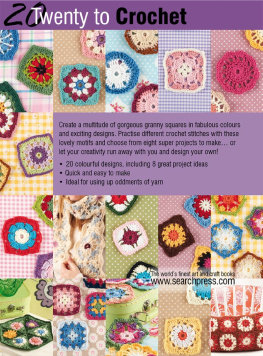



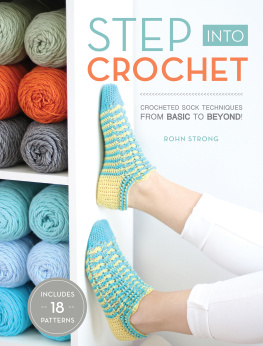
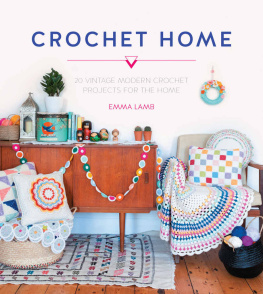
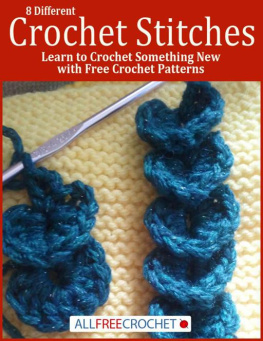
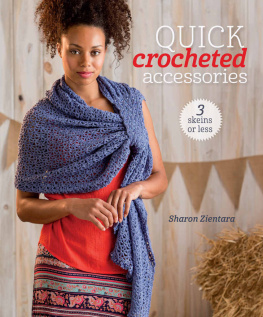







 Hooks. There are some amazingly beautiful crochet hooks available. However, hooks may vary in size from one manufacturer to the next. For example, a G hook may be 4.00 mm from one manufacturer and 4.25 mm from a different manufacturer. The hook sizes listed in this book include both US and metric sizes, like this: H-8 (5 mm). If your hook doesnt list millimeters, a needle/hook gauge, available at your local yarn shop, can help you determine the correct hook size.
Hooks. There are some amazingly beautiful crochet hooks available. However, hooks may vary in size from one manufacturer to the next. For example, a G hook may be 4.00 mm from one manufacturer and 4.25 mm from a different manufacturer. The hook sizes listed in this book include both US and metric sizes, like this: H-8 (5 mm). If your hook doesnt list millimeters, a needle/hook gauge, available at your local yarn shop, can help you determine the correct hook size.